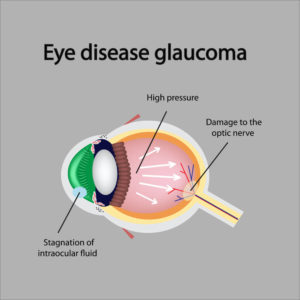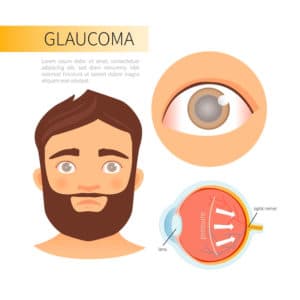The Ohio Medical Marijuana Control Program (OMMCP) includes glaucoma in the list of qualifying medical conditions under Ohio law. Patients can cite glaucoma as their primary reason for using medical cannabis products.
Medical marijuana is an alternative treatment method for patients with qualifying conditions. Only certified physicians can recommend medical marijuana products for treating patients with glaucoma. Glaucoma patients can use their doctor’s recommendation to obtain a medical marijuana card.
This card grants access to medical marijuana products in dispensaries across the state. Visit our Ohio page to start applying online.
Although there is no definitive data on OH residents with glaucoma, the Ohio population census projects that people aged 60 and over would outnumber people under 20 years old by the year 2020. Older people are more likely to develop glaucoma.
With more people at risk of getting the condition, preventive measures become necessary.
Glaucoma is a group of eye diseases that damage the optic nerve. An unhealthy optic nerve causes unhealthy vision. The damage usually results from an abnormal rise in eye pressure.
As a group of eye conditions, many forms of glaucoma have no warning signs. The optic nerve damage from glaucoma occurs gradually, so people may only realize they have the condition when it has developed into an advanced stage.

Glaucoma is the leading cause of blindness among adults over 60 years old. Although older people may be more prone to glaucoma because of a deteriorated optic nerve, anyone can develop the condition at any age.
The Centers for Disease Control and Prevention (CDC) states that at least three million Americans live with glaucoma. Worldwide, this eye condition is the second leading cause of vision loss.
There is no cure for glaucoma. Since the condition involves a gradual deterioration of eye functions, preventive measures may be the best way to preserve healthy vision.
Common types of glaucoma include:
Optic nerve damage is the primary cause of glaucoma. This nerve deteriorates over time, making older people prone to visual impairment.
However, experts also associate the increased intraocular pressure (IOP) in the eye with optic nerve damage. IOP may increase at any age.
The pressure comes from fluid buildup in the eye. We call this fluid aqueous humor. Aqueous humor should naturally drain out through the angles where the iris (the colored eye tissue with the pupil in the center) meets the cornea (the outermost eye lens). When the fluid does not drain properly, eye pressure increases.
Genes may also cause glaucoma. People may inherit glaucoma from their family members as scientists have identified genes related to different glaucoma forms.

As a vision-impairing condition, glaucoma affects several aspects of regular living. Patients with glaucoma may find driving more challenging than usual because of light sensitivity and glare problems. These sensitivity issues may also stand in the way of some activities requiring concentration like reading and playing sports.
Patients with glaucoma may also lose contrast sensitivity, which is a person’s natural ability to distinguish between light and dark.
This lower contrast sensitivity may prove to be a problem for people who rely on detecting subtle differences in patterns for a living, like visual artists.
Glaucoma symptoms depend on the type of condition a person may have:
Treating glaucoma may involve the following methods:
Adopting healthier lifestyle choices may help promote eye health. Consider the following preventative methods:
The state’s Medical Marijuana Control Program identifies glaucoma as a qualifying medical condition for medical marijuana treatment. Only certified physicians can recommend medical marijuana for glaucoma treatment.
TeleLeaf RX will help you learn more about how glaucoma patients can qualify for MMJ treatment in Ohio. Contact us Now!
